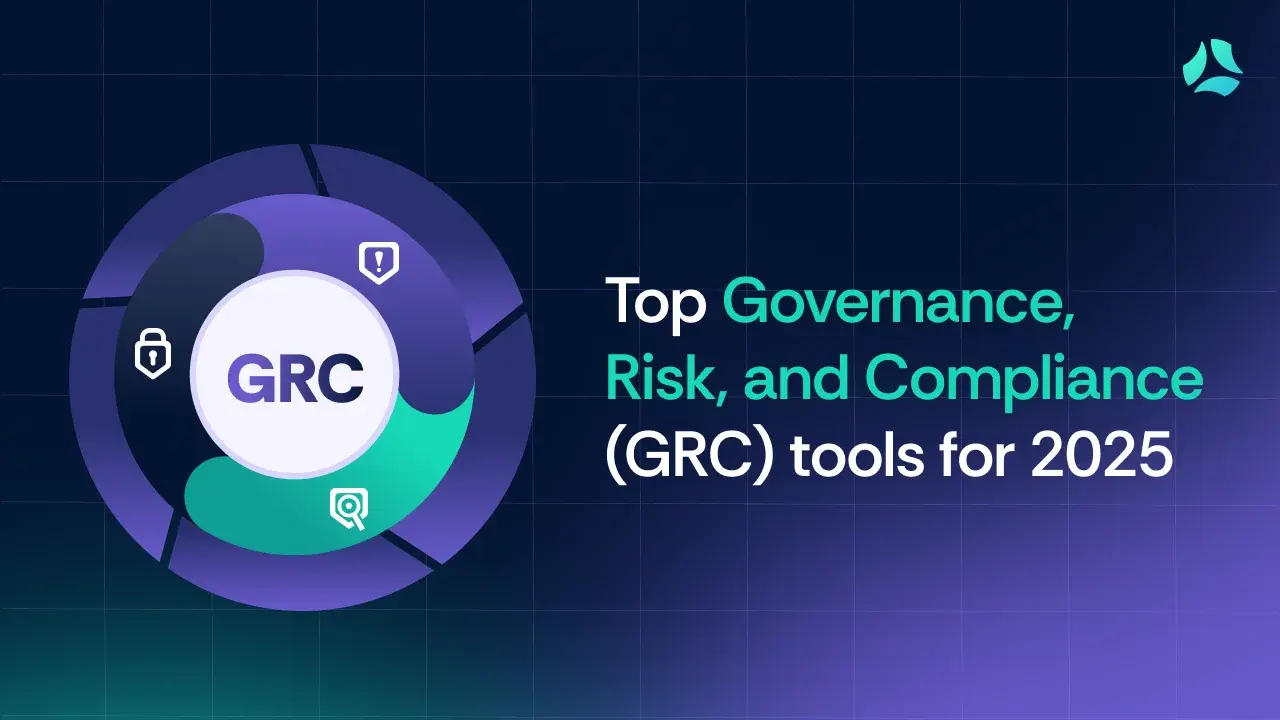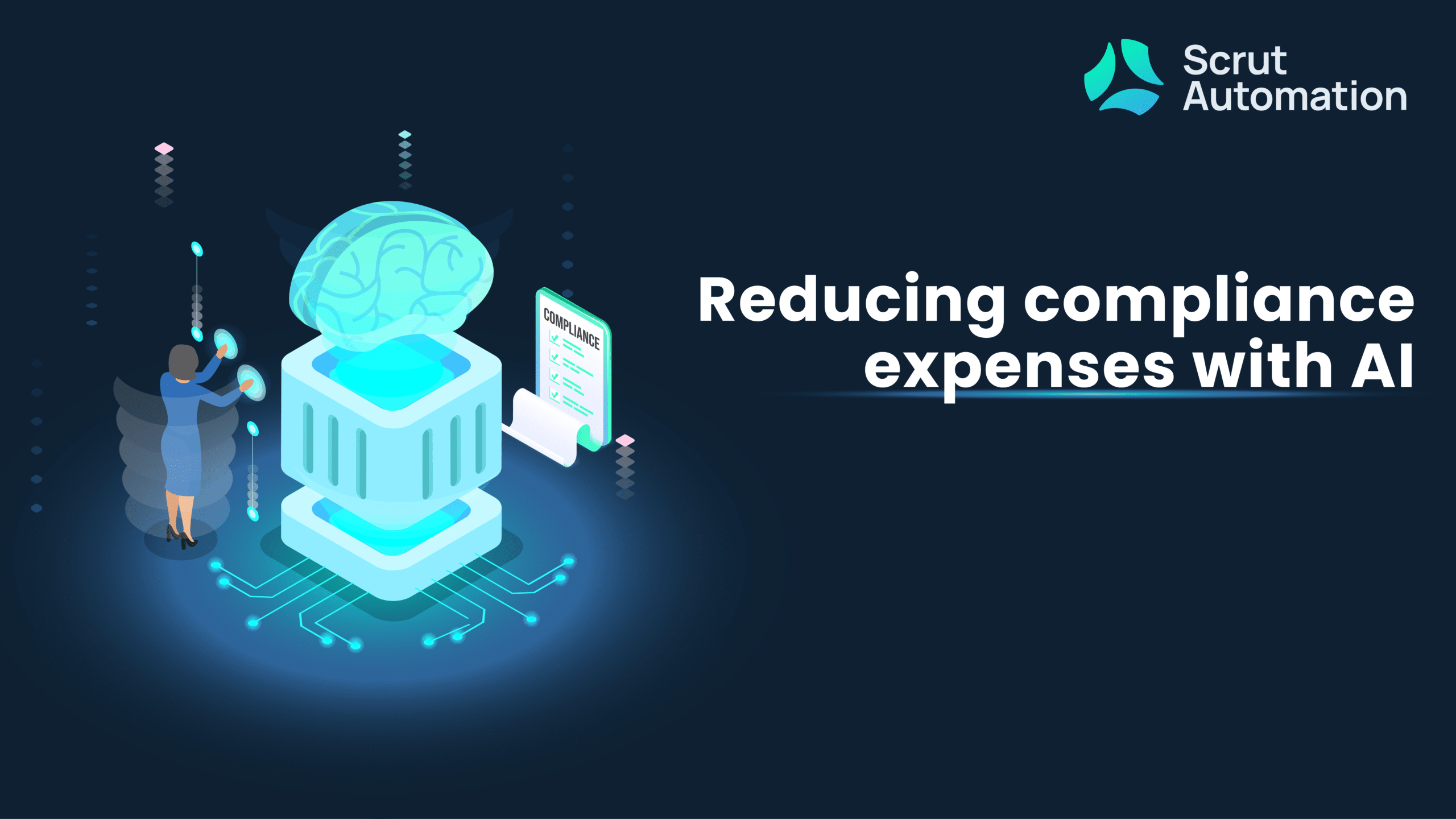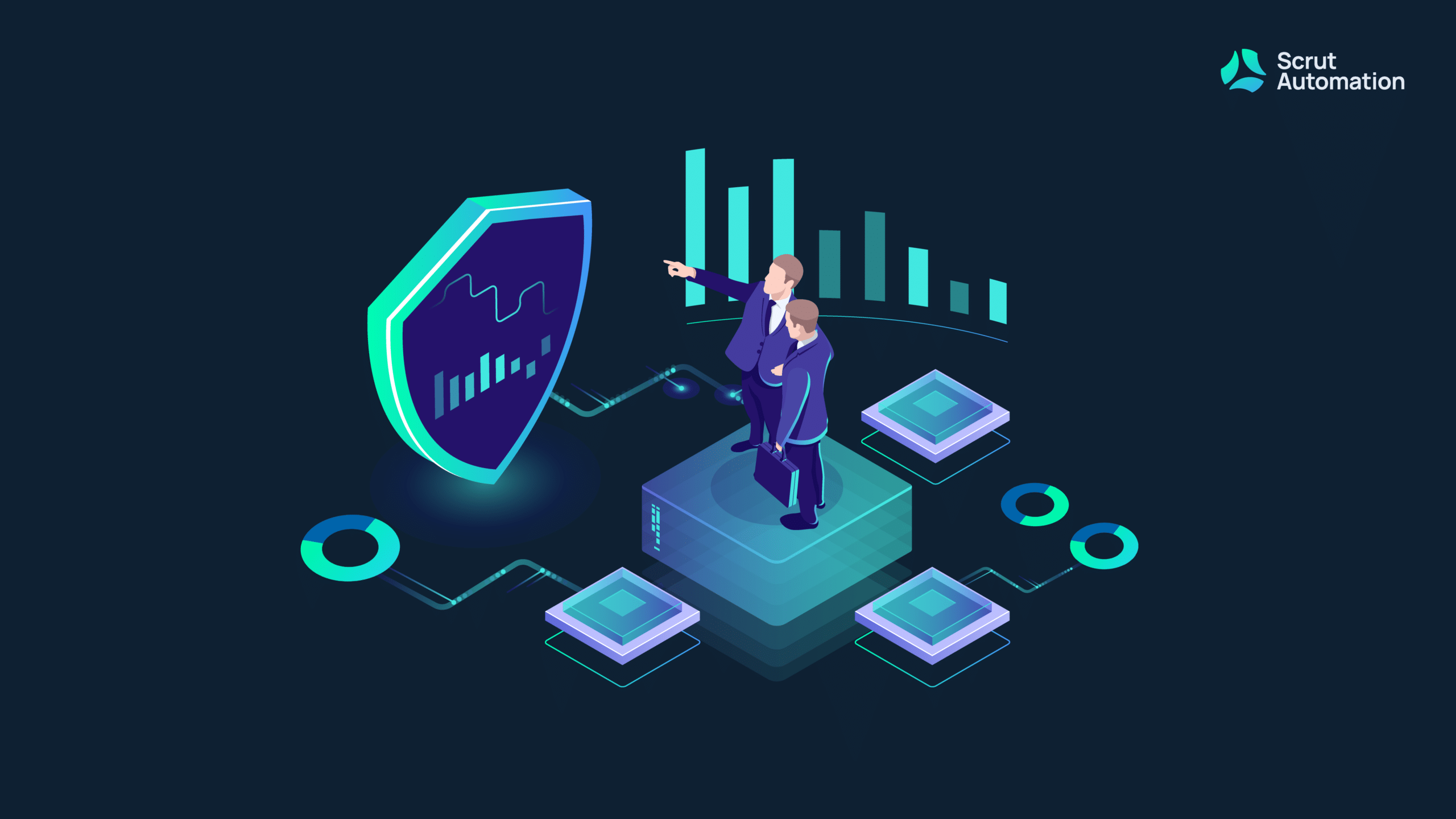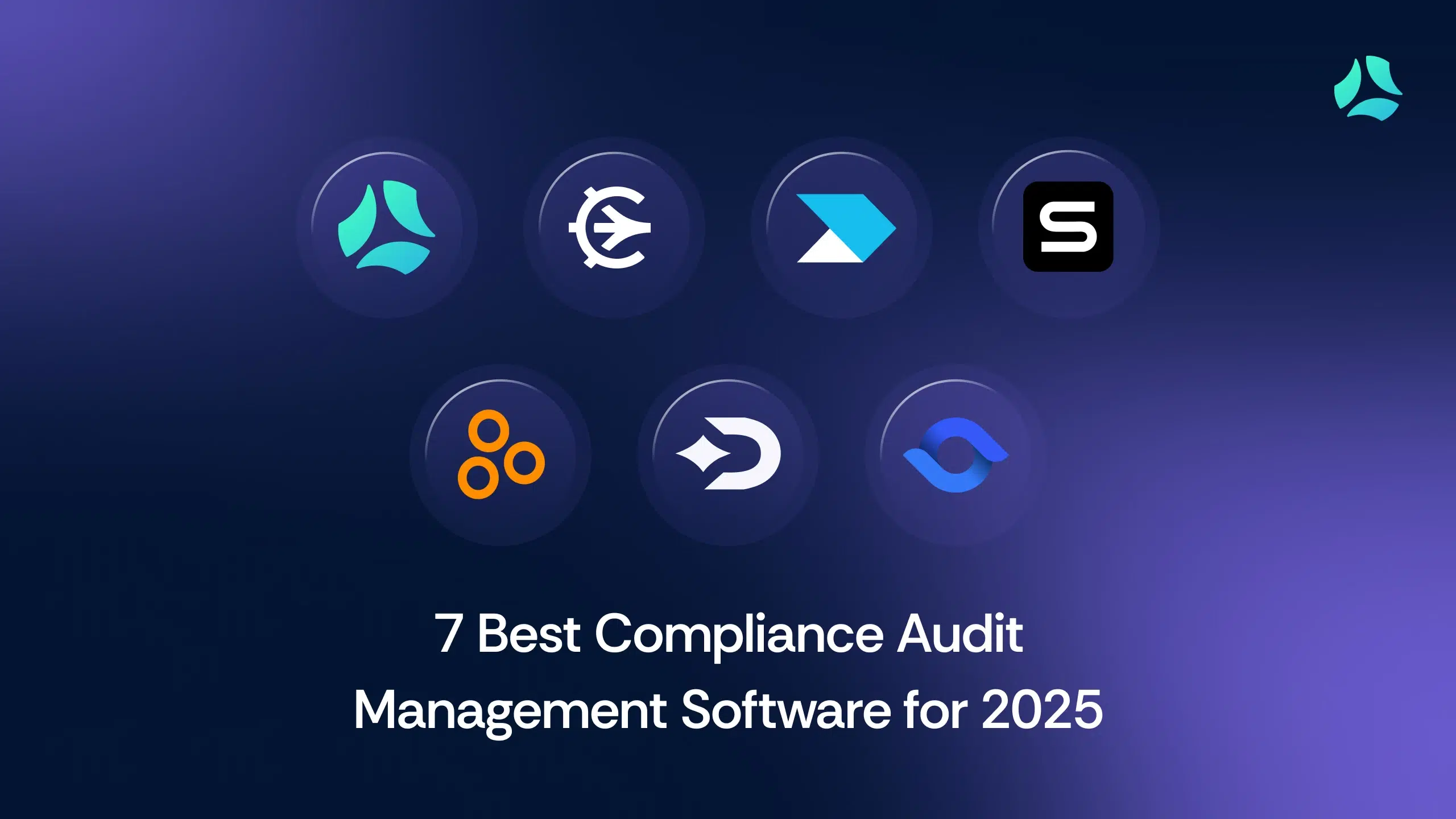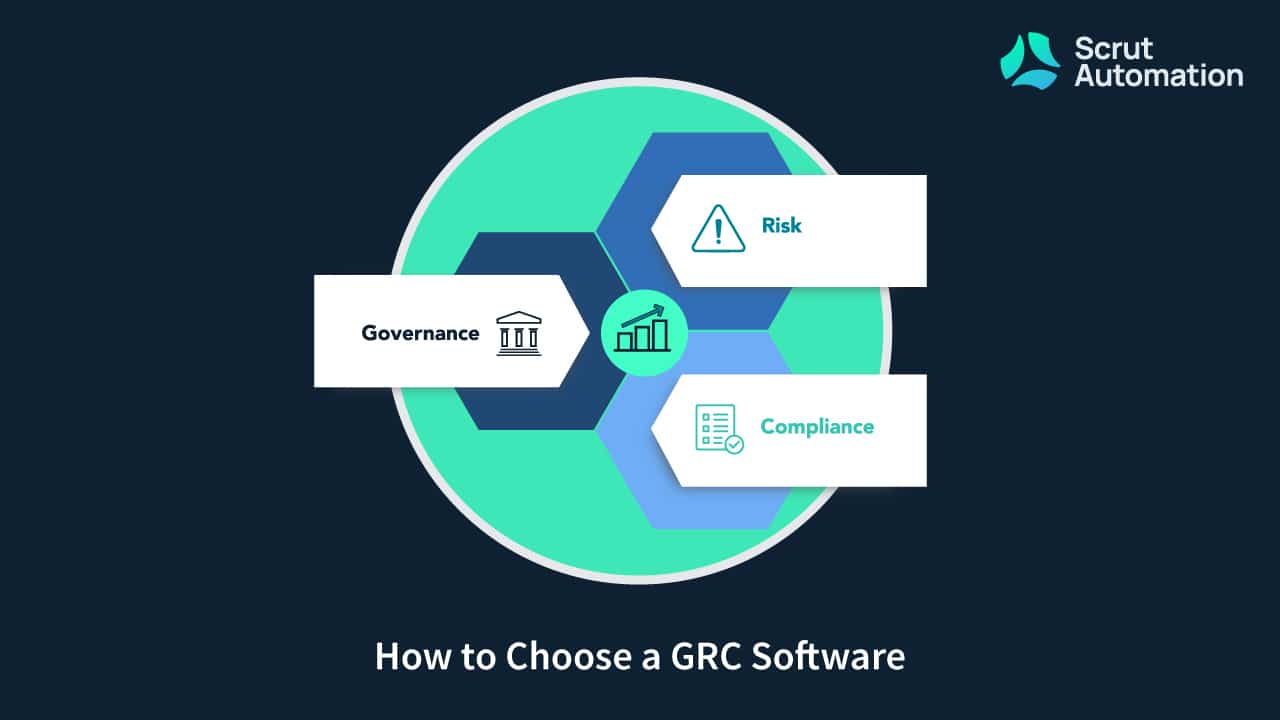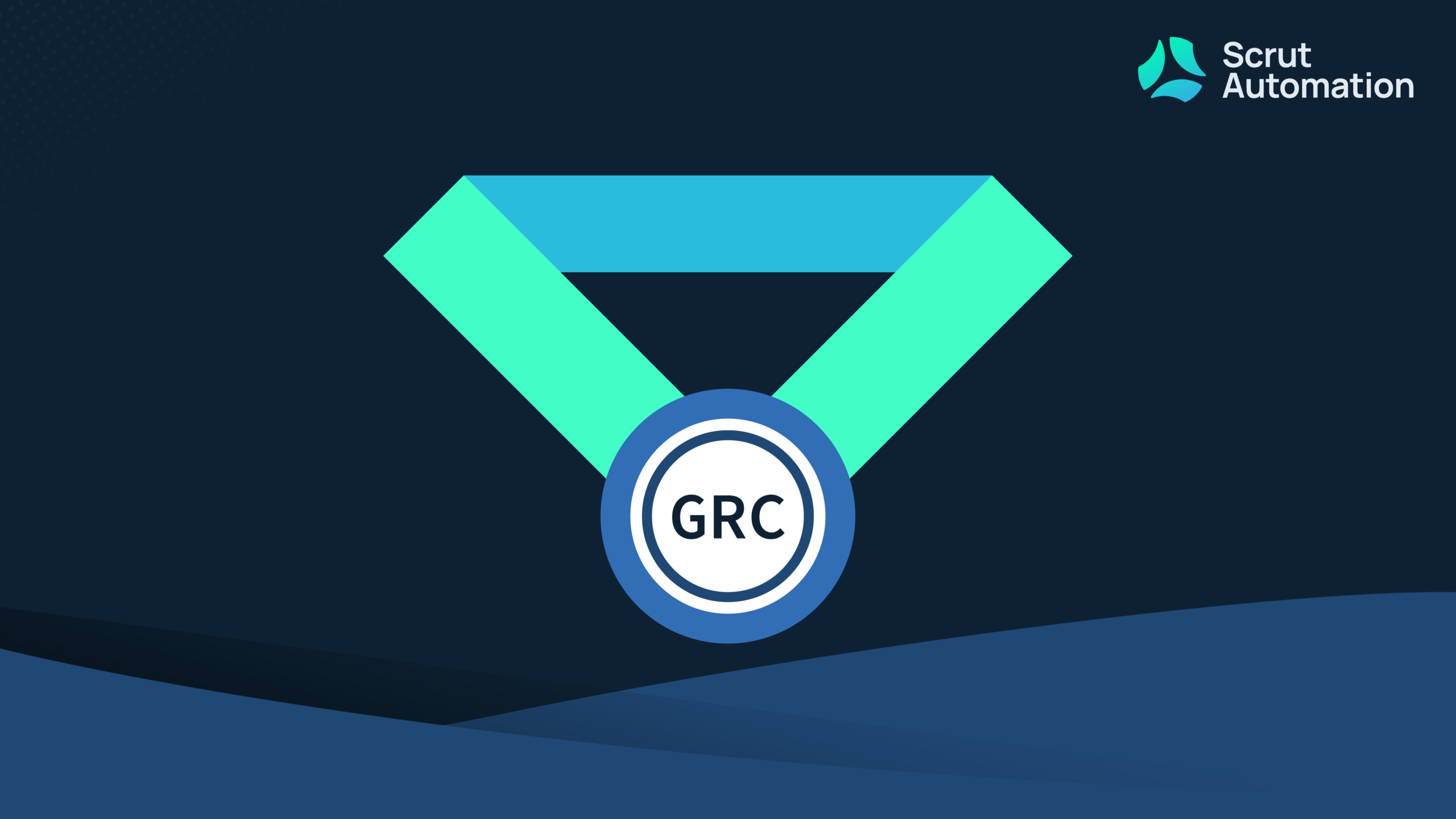Businesses must stay compliant, protect sensitive data, and mitigate risks without compromising operational efficiency. However, the lack of centralized systems, manual tracking, and poor visibility into risk exposure often leads to compliance gaps, higher costs, and increased vulnerabilities.
Fortunately, governance, risk, and compliance (GRC) software can help businesses overcome these challenges by:
- Automating compliance tracking to reduce manual effort and errors
- Strengthening risk management to minimize security threats.
- Providing greater visibility into security, risk, and compliance posture to support informed, proactive decision-making.
With so many GRC software choices in the market, choosing the right one can be overwhelming. Read on to learn about the key features of the top GRC tools that will help you make an informed decision.
Top Governance, Risk, and Compliance (GRC) tools: Overview
| Product name | Key features | Pricing |
| Scrut | – Policy Builder with 75+ pre-built templates – AI-powered response generator for security questionnaires – Continuous cloud monitoring with 230+ security controls – Automated evidence collection – Streamlined audit collaboration – Integrated risk and access management – Supports 50+ significant frameworks, including but not limited to GDPR, SOC 2, HIPAA, NIST CSF, and PCI DSS. | Contact support for details |
| Drata | – Automated risk mapping and testing- Real-time evidence collection from integrated systems- Real-time compliance reporting | Contact support for pricing |
| JupiterOne | – Continuous monitoring and risk insights- Real-time risk assessments and vulnerability management- Policy builder for security policy management | Contact support for a customized plan |
| Hyperproof | – Automated workflows for task assignments and reminders- Evidence management linked to specific controls- Continuous compliance tracking and prioritization | Contact support for a tailored quote |
| Sprinto | – Integrated risk management mapped to controls- Automated evidence collection for audits- Synchronization with auditors directly from the platform | Contact support for details |
| Secureframe | – Automated evidence collection from 100+ core services- Compliance with frameworks like SOC 2, ISO 27001, PCI DSS, GDPR, HIPAA- Governance support with pre-developed policies | Contact support for customized pricing |
6 Best GRC tools for 2025
The list below compares the best GRC software, along with their features and pricing. Explore their features to find the best fit for your needs.
1. Scrut Automation
Scrut is a GRC tool that streamlines governance, risk, and compliance processes with automation, real-time risk monitoring, and multi-framework support. It helps organizations adhere to multiple standards like SOC 2, ISO 27001, and GDPR by simplifying audit preparation, automating evidence collection, and providing continuous compliance tracking.
Key features
1. Supports 50+ compliance frameworks
Scrut simplifies compliance management by supporting 50+ industry frameworks, including SOC 2, ISO 27001, PCI DSS, HIPAA, GDPR, NIST CSF, CMMC, and more. Instead of managing separate compliance processes for each standard, businesses can use Scrut to map and consolidate controls across multiple regulations—reducing redundancy and saving time.
2. 100+ policies, 1000s of controls, all out-of-the-box
Creating security policies from scratch can be overwhelming. Scrut offers 100+ policy templates out-of-the-box, vetted by a team of in-house experts. Moreover, these policies are mapped to the proper controls. So when an organization applies a policy, Scrut automatically links it to the appropriate security controls, ensuring adequate compliance structure and audit readiness.
3. Trust vault & AI-enabled security questionnaire automation
Usually, gathering evidence for compliance and manually filling out a security questionnaire is time-consuming, delaying the onset of deals and partnerships. However, these tasks are imperative to position your security posture and trust signals to other businesses. Scrut’s Trust Vault and Kai, an AI-enabled response generator, can help you here.
Scrut’s Trust Page provides a centralized, self-service portal where you can access up-to-date compliance reports, security policies, and certifications. This eliminates back-and-forth requests, reducing friction in the sales and procurement process.
Kai pulls relevant details from Trust Pages and internal documentation for incoming security assessments, ensuring fast, consistent, and audit-ready responses. In addition to this Kai can help you:
- Automatically generate responses based on pre-approved compliance documentation and security policies.
- Review and edit responses from a single dashboard, ensuring accuracy before submission.
- Track progress, set deadlines, and export completed questionnaires—making the entire process seamless.
4. Continuous real-time cloud monitoring
Scrut gives you a real-time view of your cloud security and compliance posture. It continuously monitors 230+ security controls to ensure your cloud environment is compliant and risk-free.
Here’s how Scrut helps strengthen your cloud security:
- Monitors sensitive data changes (like customer, employee, or vendor information) to reduce data exposure risks.
- Identifies misconfigurations in applications and network settings and alerts security teams.
- Ensures compliance with industry standards like SOC 2, ISO 27001, HIPAA, PCI DSS, and GDPR.
5. Automated evidence collection
Compliance audits require solid evidence to prove your internal controls are in place. Instead of manually gathering this data, Scrut integrates with your cloud environments, code repositories, identity providers, HRMS, and other applications to collect and organize evidence automatically and systematically.
This means less time spent on manual work and fewer compliance headaches. You can also use Scrut to assign and track compliance tasks, ensuring that nothing falls through the cracks.
6. Streamline audit collaboration with easy access for auditors
Scrut lets you grant auditors access on a need-to-know basis, ensuring security while making collaboration seamless. Auditors can review policies, tests, and evidence directly on the platform. If they have questions, they can leave comments about:
- Findings such as compliance gaps and document observations for teams to address
- Making requests for additional evidence, documents, or clarifications
- Suggesting corrective actions and tracking remediation efforts to ensure compliance issues are resolved efficiently.
With this feature, teams can respond to queries, update documentation, and ensure faster audit completion—all within the Scrut platform.
Case Study
| M&C Aero, a SaaS provider based in Nice, France, sought to expand its airline software solutions into the North American market. To meet stringent cloud security requirements, they must obtain multiple information security certifications promptly. However, M&C faced challenges, including time-consuming responses to security questionnaires due to gaps in their documentation, manual and inefficient employee onboarding processes, infrequent monitoring for misconfigurations, and a lack of consolidated artifacts leading to duplicative efforts across frameworks. To address these issues, M&C implemented Scrut’s platform and: Utilized 400+ pre-configured controls to accelerate security processes.Conducted daily cloud tests against 230 CIS benchmarks to identify non-compliant assets.Expanded managed risks from 7 to 25 using Scrut’s intuitive risk module.Enabled swift risk assignment and initiated remediation for faster issue resolution. M&C also achieved a 300% faster response time to security questionnaires, reduced risk mitigation time by 50% through improved collaboration, and discovered and monitored 3.5 times more risks, significantly enhancing their security posture and operational efficiency. Read the complete case study here! |
Pricing
Contact their support team for details on the pricing plan.
2. Drata
Drata simplifies GRC with continuous security monitoring, automated evidence collection, and real-time compliance tracking. It streamlines risk assessments, integrates with primary cloud services, and offers auditor-ready reports.
The tool also supports frameworks like SOC 2, ISO 27001, and HIPAA, ensuring effortless compliance management and improved security posture.
Key features
- Automated risk mapping and testing: The platform automates risk mapping and testing processes to provide real-time visibility into an organization’s risk posture.
- Automated evidence collection: Drata automates real-time evidence collection from various integrated systems and tools. This evidence collection aids compliance by simplifying audit preparation and ensuring all necessary documentation is readily available.
- Real-time reporting: The platform provides real-time reporting on compliance status, highlighting areas requiring attention through its dashboard. This feature lets audit preparation by generating reports on demand.
Pricing
Drata comes with three pricing plans. Contact their customer support to get the latest pricing.
4. Hyperproof
Hyperproof is a GRC software that brings all compliance and risk management tasks together. It helps businesses manage different compliance frameworks, automate tasks, collect evidence, prioritize risks, and scale their processes for managing compliance and risk.
Key features
- Automate workflows: Hyperproof automatically assigns tasks, collects evidence, sets up reminders for task owners, and monitors controls to reduce risks.
- Evidence management: It ensures evidence collection by gathering and organizing it in one central location. It links the evidence to specific controls, making it easy to share with stakeholders. The platform automates the collection of crucial data, such as backups, encryption, and code changes, while labeling evidence to reduce legal risks.
- Continuous compliance: Hyperproof identifies, evaluates, and prioritizes risks across departments. It customizes risk scoring, tracks mitigation efforts, and automatically updates risk health status to ensure compliance.
Pricing
Contact their support team for a quote.
5. Sprinto
Sprinto is a compliance automation and risk management tool that connects your cloud infrastructure with people, processes, and technology to improve GRC.
Key features
- Integrated risk management: It maps risks to the proper controls to reduce risk impact, minimize residual risks, and prevent failures. Also, the platform produces a detailed summary of all risks against selected frameworks.
- Continuous compliance: Sprinto allows you to build a fully connected and end-to-end automated compliance program that monitors controls for non-compliance, identifies anomalies, and triggers remediation. It collects evidence in an audit-friendly way.
- Synchronization audit: Sprint connects and coordinates with an auditor directly from the dashboard. The platform collects audit evidence automatically and in an auditor-approved way, helping you complete audits quickly.
Pricing
Talk to Sprinto’s support team.
6. Secureframe
Secureframe helps businesses streamline security and compliance processes. It automates risk assessments, audits, and policy management to meet framework standards.
Key features
- Automated evidence collection: Secureframe integrates with over 100 core services to automatically collect audit evidence and monitor cloud infrastructure for non-conformities.
- Compliance: Secureframe simplifies compliance with various frameworks such as SOC 2, ISO 27001, PCI DSS, GDPR, HIPAA, and NIST standards. It automates audit evidence collection and provides continuous monitoring to ensure ongoing compliance.
- Governance: The platform helps organizations define and implement governance structures by providing access to dozens of pre-developed policies that can be adapted to the organization’s needs.
Pricing
You need to contact their customer support for pricing details.
What features should your GRC software have?
Choosing the right GRC software requires looking beyond essential compliance checkboxes. A robust solution should help you proactively manage risks, streamline compliance, and automate time-consuming processes like filling security questionnaires, evidence collection, etc. Here are the top features to look for:
1. Automated risk management
Your GRC tool should simplify identifying, tracking, and addressing risks before they become significant problems. It should include an intuitive risk register to document risks, a task tracker to assign responsibilities, and precise reporting tools to keep everything transparent.
With a built-in task tracker, you should be able to delegate tasks, set deadlines, and monitor progress, ensuring that risks are resolved on time. Plus, real-time dashboards should give you a clear picture of your risk landscape, helping your team stay proactive instead of reactive.
2. Support a unified control framework
Instead of juggling multiple compliance frameworks separately, your GRC tool should streamline everything with a unified control framework. This means you should be able to create a single control system that ensures compliance across different standards like GDPR, SOC 2, HIPAA, and more without unnecessary duplication of work.
In Scrut’s case, the platform maps controls across multiple regulations, ensuring businesses don’t duplicate work. For example, if a company meets SOC 2 control requirements, Scrut automatically maps those controls to ISO 27001 and GDPR where applicable—reducing redundancy and saving effort.
3. Automated evidence collection
Manually gathering compliance evidence is time-consuming. An innovative GRC tool should integrate with your existing systems like cloud providers, ERP platforms, and third-party apps to automate evidence collection and highlight compliance gaps.
Beyond that, it should offer pre-built workflows and automation to validate risks, review policies, and simplify audits, making compliance management smoother and less stressful.
4. Customizable compliance workspaces
Every business is different, and your cyber GRC software should adapt accordingly. A scalable solution should allow you to create separate compliance workspaces for other product lines, business units, or entities while sharing key resources like vendors, assets, and personnel. This way, compliance stays organized without unnecessary duplication.
5. Automated security questionnaires
Security questionnaires can be repetitive and time-consuming. Your GRC tool should handle these tasks using AI-powered or rule-based automation.
By using pre-configured responses based on previous assessments and industry best practices, you should be able to respond faster and more accurately, freeing up time for more strategic work.
6. Audit collaboration
Effective collaboration allows teams to seamlessly share information, track compliance tasks, and communicate across departments. With real-time updates, multiple users should be able to work together on risk assessments, audit reports, and policy enforcement. This fosters better decision-making, ensures consistency, and reduces the chances of errors or miscommunication.
Wrapping up
Choosing the right cyber GRC software is key for businesses that want to manage risk, automate compliance, and improve security. As regulations get more complex, using spreadsheets and manual methods is no longer practical.
When selecting a GRC solution, look for features like risk management, automation for evidence collection, audit management, and a unified control framework for compliance to find the best fit for your business.
If you’re looking for a robust, automated, and scalable GRC platform, Scrut is the ideal choice. It helps businesses comply with multiple frameworks, proactively manage risks, and build customer trust with minimal manual effort.
Book a demo with Scrut today and take the next step toward a more secure and compliant business.
Frequently asked questions
Why would I need a GRC platform?
GRC platforms help identify, assess, and mitigate risks while ensuring regulatory compliance. It streamlines decision-making by consolidating data from various departments, enhancing transparency and accountability. It also automates risk management and compliance tracking tasks, reducing costs and improving efficiency.
How secure are these tools?
GRC tools are designed to provide increased visibility into risks and threats, enhancing security posture by integrating risk management with business objectives. They often include features for managing IT security risks but may vary in their specific security measures depending on the vendor.
Do GRC tools support collaboration among stakeholders?
Yes. GRC tools support stakeholder collaboration by providing a centralized platform for communication across teams and departments. This enables seamless task delegation and access to shared data.
